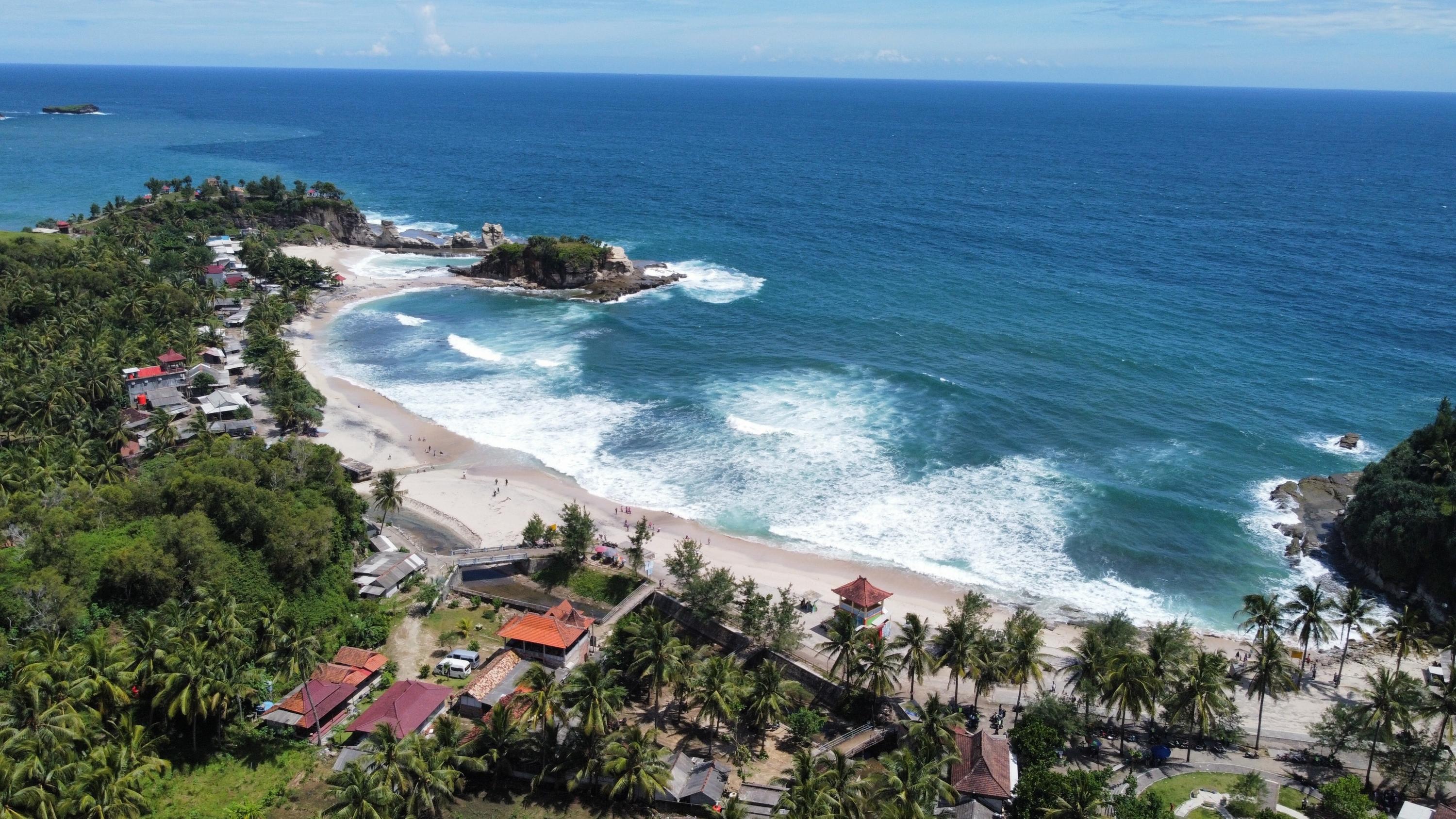The villages of Tambakrejo (East Java), Kemadang and Glagah (Yogyakarta) are successfully implementing the Tsunami Ready Recognition Programme established by UNESCO, through its Intergovernmental Oceanographic Commission (IOC-UNESCO).
The Tsunami Ready Recognition Programme covers twelve indicators, including the development of a community tsunami risk reduction plan, designated and mapped tsunami hazard zones, public display of tsunami information, easily understood tsunami evacuation maps, the development of outreach and public education materials, to name but some of the measures required.
The three Indonesian villages implemented the indicators with support and facilitation from IOC-UNESCO’s Indian Ocean Tsunami Information Centre (IOTIC), Indonesia’s Agency for Meteorology, Climatology, and Geophysics (BMKG), and the Local Disaster Management Agency (BPBD).

UNESCO-IOC IOTIC advocates the community leaders on the 12 UNESCO-IOC Tsunami Ready Indicators at Glagah Village, Kulonprogo, Yogyakarta. ©UNESCO/Ardito M Kodijat
“Although we have been working on Desa Tangguh Bencana [DESTANA, Disaster Resilient Village] from the Multi-hazard perspective for several years, the implementation of these 12 UNESCO-IOC Tsunami Ready Indicators helps us to better understand the tsunami hazard in our area and to focus more on tsunami preparedness,” Disaster Risk Reduction Forum of Kemadang Village.
In August 2022, the IOTIC and BMKG, representing Indonesia’s National Tsunami Ready Board – entity in charge of guiding the implementation of the IOC-UNESCO Tsunami Ready Programme in the country – visited the three villages to review and verify their achievements relative to the twelve Tsunami Ready Indicators.
The Forum Pengurangan Risiko Bencana (FPRB; Village Disaster Risk Reduction Forum) is responsible for the tsunami preparedness of the villages. As a follow up to the verification visit, under the leadership of the head of each village, the FPRB will complete the application form with all the supporting documents and evidence to be submitted to the National Tsunami Ready Board, which will review the submissions against the requirements and give the IOC-UNESCO Tsunami Ready Recognition.
“These three villages are unique one to the others, we can learn a lot from them in term of tsunami preparedness. Although surrounded by hills, Tambakrejo village has a low land area that can be inundated by the tsunami as far as 2 km. Kemadang village is a very hilly area, however, their beautiful beaches attracted many local and domestic visitors that can be a challenge in the evacuation process. The emergency response and evacuation plan for Glagah village is interesting due to their location next to the newly developed Yogyakarta International Airport,” verification team review.
Indonesia aims to have 7 villages recognized as IOC-UNESCO Tsunami Ready Communities by the end of 2022. The Tanjung Benoa community in Bali was the first in Indonesia to obtain the recognition, announced during the Global Platform for Disaster Risk Reduction in May 2022.

Tsunami Hazard Information at Fisherman Village in Sindang Biru, Tambakrejo.White signage: Be Aware you are entering tsunami hazard area; the yellow signage informs the public on tsunami signs and what to do. ©UNESCO/Ardito M Kodijat

Tsunami Evacuation Route at Baron Village, Gunung Kidul, Yogyakarta.This touristic coast is surrounded by hilly area, people from the beach can reach the hills in less than 10 minutes. ©UNESCO/Ardito M Kodijat
In addition to Tanjung Benoa in Indonesia, two other communities in India, Venkatraipur and Noliasahi in Odisha State were recognized as UNESCO-IOC Tsunami Ready Community in 2020.
IOTIC and the IOC-UNESCO Intergovernmental Coordination Group for Indian Ocean Tsunami Warning and Mitigation System (ICG/IOTWMS) will organize an Indian Ocean Tsunami Ready Symposium by the end of November 2022 to share lessons learned and good practices of the Indian Ocean Tsunami Ready Communities.
The IOC-UNESCO Tsunami Ready Recognition programme contributes to the UN Decade for Ocean Science aiming to support the Societal Outcome of Safe Ocean with 100% tsunami at risk people are prepared for and resilient to tsunami through the UNESCO-IOC Tsunami Ready or other similar activities.
***
More about the Tsunami Ready Recognition Programme
More about IOC-UNESCO:
The Intergovernmental Oceanographic Commission of UNESCO (IOC-UNESCO) promotes international cooperation in marine sciences to improve management of the ocean, coasts and marine resources. The IOC enables its 150 Member States to work together by coordinating programmes in capacity development, ocean observations and services, ocean science and tsunami warning. The work of the IOC contributes to the mission of UNESCO to promote the advancement of science and its applications to develop knowledge and capacity, key to economic and social progress, the basis of peace and sustainable development.
